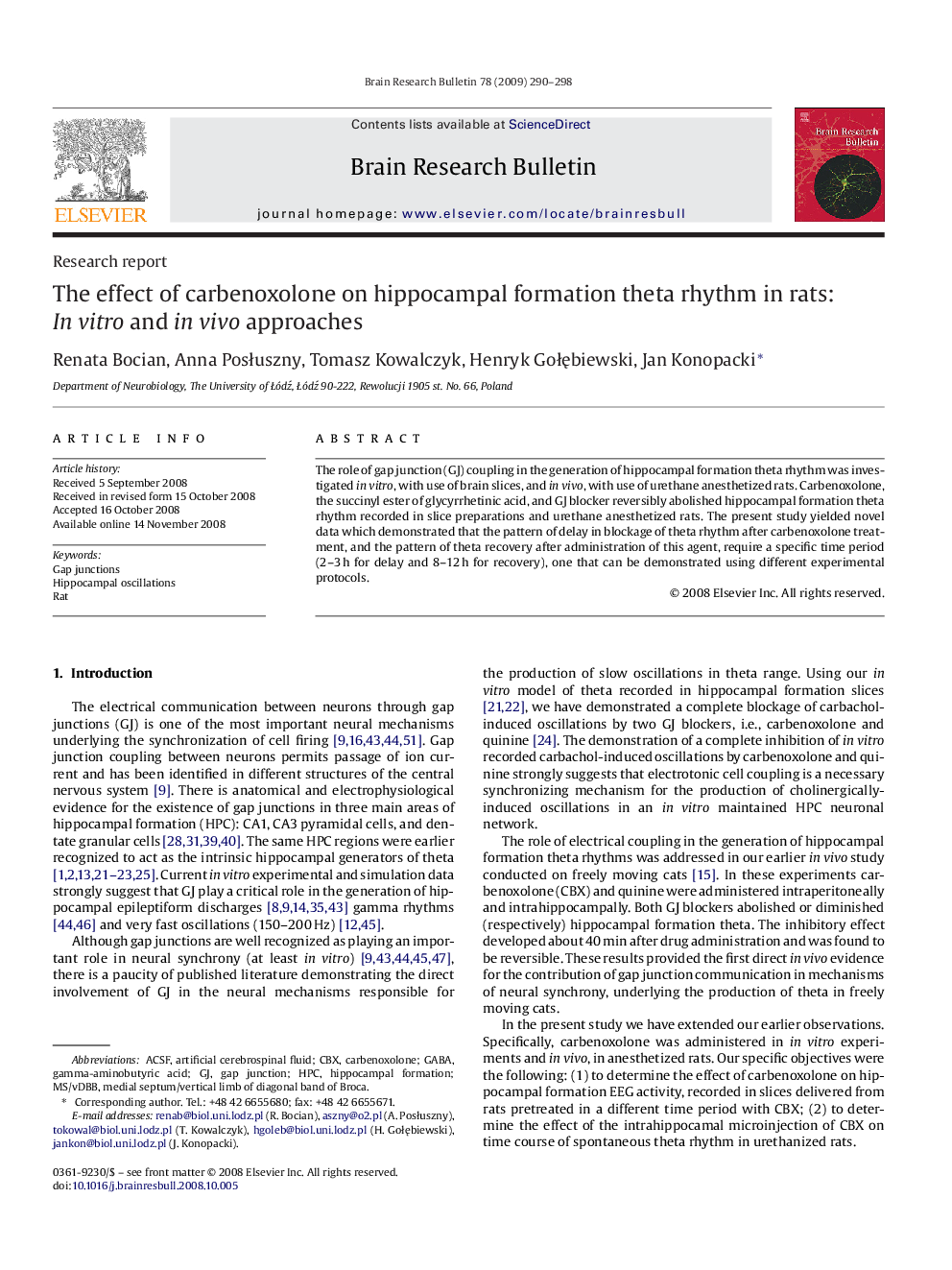| Article ID | Journal | Published Year | Pages | File Type |
|---|---|---|---|---|
| 4319739 | Brain Research Bulletin | 2009 | 9 Pages |
Abstract
The role of gap junction (GJ) coupling in the generation of hippocampal formation theta rhythm was investigated in vitro, with use of brain slices, and in vivo, with use of urethane anesthetized rats. Carbenoxolone, the succinyl ester of glycyrrhetinic acid, and GJ blocker reversibly abolished hippocampal formation theta rhythm recorded in slice preparations and urethane anesthetized rats. The present study yielded novel data which demonstrated that the pattern of delay in blockage of theta rhythm after carbenoxolone treatment, and the pattern of theta recovery after administration of this agent, require a specific time period (2–3 h for delay and 8–12 h for recovery), one that can be demonstrated using different experimental protocols.
Keywords
Related Topics
Life Sciences
Neuroscience
Cellular and Molecular Neuroscience
Authors
Renata Bocian, Anna Posłuszny, Tomasz Kowalczyk, Henryk Gołębiewski, Jan Konopacki,
